The Streetcar Era
—by Mac McGrew
Here is a sampling of
just the first two chapters of his book
|
Introduction
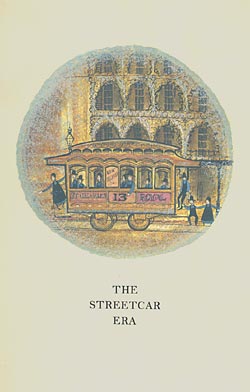 Except in a few metropolitan areas, most people now think of streetcars as something their grandfathers talked about; something existing only in the dim past or in museums. But many of the older generation remember them as a way of life a dependable form of transit in a great many cities and towns.
Except in a few metropolitan areas, most people now think of streetcars as something their grandfathers talked about; something existing only in the dim past or in museums. But many of the older generation remember them as a way of life a dependable form of transit in a great many cities and towns.
Trolley museums have developed in many parts of the country in recent years. Part of their appeal is nostalgic the look at the way things used to be. Some say railroading attracts more fans than any other industry, and streetcar operation is a very special form of railroading in a way it might be called railroading in miniature. Not in the sense of small scale models, but in the sense that the operations of many miles of railroading are condensed into one mile or less switches and curves, stops for passengers, sometimes signals and passing sidings. And the observant passenger can literally look over the shoulder of the “engineer,” or operator, and see how he handles problems.
In the museums, groups of enthusiasts have painstakingly saved and restored reminders of the days when streetcars were one of the most widespread forms of transportation, when they dominated the streets of most cities and towns, and in some cases rivaled the steam railroads for numbers of passengers carried.
For generations the basic technology of electric railways has been universal, but throughout much of the streetcar era many local operators maintained a rugged individualism in car design and operating practices that resulted in colorful contributions to the character of their cities.
There might be more streetcars around now than one would have expected. These articles cover some of their rise and fall, and their beginning to rise again!
Chapter I: Animal Power
“This event will go down in the history of our country as the greatest achievement of man.” So said the mayor of New York City when service on the world’s first passenger horsecar line was inaugurated on Wednesday afternoon, November 14, 1832. The first streetcar rails were laid along the Bowery from Prince to Fourteenth Street, by the New York & Harlem Railroad Company.
There were two cars, modified omnibuses, built and patented by John Stephenson, and each had its beautifully decorated sides embellished with the same name, “John Mason,” for the president of the company. Each car had three compartments, and each compartment seated ten persons and had a door on each side. The driver had a seat on the roof, this seat being duplicated at the other end so the car could be operated in either direction. The car body was suspended from the frame by leather straps.
The two cars, each drawn by two horses, started from the lower terminus of the road with great pomp and ceremony, amid a large crowd of spectators. The first car contained officers of the company and the Common Council of the city of New York, while the second car contained other dignitaries.
After traveling a short distance, the driver of the first car suddenly reined up his horses in response to some signal from an officer ahead of the car. The second car was following very closely, so that its driver did not see the signal in time to prevent a collision, and as a result the officials in the first car were startled to find the center pole of the other car suddenly coming through the back of their vehicle. No injuries are recorded.
* * *
John Stephenson had come from Ireland with his parents in 1811, when he was two years old. After serving an apprenticeship as a coach-builder, he established a shop on Broadway in 1831, and began the construction of omnibuses, the first to be built in the city of New York. The previous year he had suggested rails for cars, so he had a chance to apply the idea shortly after opening his shop. The design of the first horsecars was a combination of the American omnibus and the English coach. Their four flanged wheels ran on simple strap-iron rails laid on stone stringers set in the street.
Three years after the start of this first horsecar line, the operators experimented with a small steam locomotive to pull the cars, but this was not successful, and after a while was discontinued. Meanwhile the horsecar service continued, and in 1837 was extended five miles to Yorkville. About 1840, the original four-wheel cars were abandoned, and larger eight-wheel cars were placed in service. However, these were not entirely satisfactory, and after a few years four-wheel cars of a new design, built low and with platforms at each end, were adopted.
This pioneer street railway service was never a great success, and the idea was slow to catch on elsewhere. In 1835 the New Orleans & Carrolltown Railroad began operating its horsecars on Canal Street, but it was many years before any further developments took place.
By 1850 the downtown streets in New York City were so crowded that a pedestrian bridge was built across Broadway at Fulton Street. In 1852 a French engineer named Loubat revived the horsecar idea, and persuaded the city to try a short line on Sixth Avenue. Using a new type of car which was less bulky and awkward than previous models, the line was so successful that by 1855 additional companies had been formed to run horsecars on Third and Eighth Avenues.
Meanwhile, in 1843 John Stephenson had built a large new factory covering 16 city lots, to build an eight-wheel car designed by Ross Wenans of Baltimore. But a car of this size was too far ahead of its time, and failed to displace the usual smaller cars. Going to the opposite extreme, about 1860 Stephenson developed a little car which could be pulled by one horse. This was first introduced in New Orleans, and then was adopted in New York City in an effort to reduce congestion.
By now the idea was spreading rapidly. Before 1860 horsecars were running in Brooklyn, Boston, Philadelphia, Chicago, Baltimore, Pittsburgh and Cincinnati. Other cities soon followed, with new lines springing up almost daily.
The new services were generally popular with the public, although there were many charges of political corruption over the granting of franchises for the use of public streets. But the comparison of riding on smooth steel rails rather than on rough cobblestones or unpaved streets was one of the biggest factors in their acceptance.
Operation of the new lines was not always easy. The horses or often, mules required expert handling, and were subject to unexpected accidents and diseases. In 1872 a great outbreak of epizootic disease swept through many horse systems in the United States, causing suspension of service in numerous cities scattered attempts to move cars by man-power were short-lived and intensifying the search for a power source not dependent on animals. The average 20 pounds of solid “pollution” deposited on the streets each day by each horse big cities had thousands of them in horsecar service also added urgency to this search.
Horsecar drivers were necessarily a hardy lot, as they had to face all kinds of weather with little protection. The platforms in those days were never enclosed, so rain and wintry blasts were part of their lot. Passengers fared a little better, but not much. The early cars had no heating, except perhaps a layer of straw on the floor for insulation. When stoves or heaters of various sorts were added, they were uncertain and undependable at best, and at worst were liable to set the cars on fire. But even at that, clothing manufacturers complained that sales were off for heavy overcoats, as workmen needed less protection on their way to inside jobs.
Statistics show that in 1881 there were 415 street railway companies in the United States, operating 18,000 cars over 3000 miles of track, with more than 100,000 horses. And when the first convention of street railway men met in Boston in the following year, the mayor paid tribute to the popularity of the service with this pronouncement: “Cars can now be seen going to and from the places of amusement filled with ladies robed in silks, velvets and ermines and adorned with costly emeralds, rubies and diamonds.”
Most horsecar lines were gone by the turn of the century, converted to cable or electric operation, but a few held on for many more years. One of these ran on Pittsburgh’s South Side until 1923, to retain franchise rights.
The “Skipper” or driver of the single car on this Sarah Street line, Frank Campbell, was interviewed a short time before he and the car and the two mules were retired. At the time he was about to celebrate his 78th birthday; he had worked for the railways company for 47 years and had been on that line for 41 years. His work day was ten hours eight hours driving the car and two hours tending the mules, Fritz and Jake, which had been on active duty for 20 years.
Mr. Campbell took delight in relating the hardships that were part of the horsecar driver’s life in the early days. Before the strike of 1887, he said, crews worked from 5 a.m. until 10 p.m. or midnight, being paid a flat rate of $1.75 a day regardless of the number of hours.
By contrast, in 1922 his work day began at 7 a.m., when he watered, fed and harnessed his team. From 8 a.m. until 4 p.m. he traveled back and forth on his line, allowing 25 minutes to go from one end to the other, and 5 minutes to prepare for the return trip. At 4 o’clock he uncoupled the mules, chained the wheels of the car to prevent kids from making a push car of it, then proceeded to the barn where the animals were bedded down for the night. In addition to serving as car crew, he said that he had been obliged to assume the duties of maintenance gang by keeping the track spiked down and in running shape, as well as rerailing the car after occasional derailments.
Chapter II: The Search for a Substitute
As early as 1835, inventors were struggling with the idea of applying the crude electrical motors of the day to the moving of cars on rails. For more than 40 years these experiments continued, off and on, but since their only source of power was the primary battery, all were doomed to failure.
The apparent answer to the problem of eliminating animal power cam in 1873, when Andrew S. Hallidie developed the cable system for moving cars up and down the steep hills of San Francisco. Necessity was the mother of invention there, for animals could not drag loaded cars up the steeper hills of the city, and it troubled Hallidie to watch them struggling to accomplish more than was practical. His first short line conquered the 16% grade of the Clay Street hill.
Cable railways were a marvelous and intricate invention, though the idea was simple. A cable ran at a constant speed in a conduit below the street, powered by a steam engine in a central power house. Each car was equipped with a grip, extending through a slot in the street, by which the operator could lock onto the cable. This enabled the cars to mount steep hills with ease, and equally important to descend safely at the same constant speed.
Operation was nearly weatherproof rain and snow had little or no effect on the cable cars, as there was no problem of slipping wheels, either in climbing or descending steep grades.
Meanwhile, experiments with electricity were continuing, with invention of the power-driven dynamo opening a great new field of possibilities. Thomas Edison built an experimental car at his laboratory in Menlo Park, N.J., in 1880. Other inventors made important contributions, culminating in the first large commercial electric railway, built by Frank J. Sprague in Richmond in 1888.
One of the important experimenters was Leo Daft, of the Daft Electric Light Co., Jersey City, N.J. Early in 1886 the promoters of a railway line in Pittsburgh, Pa., asked Daft to bid on construction of the line using his system. Looking over the proposed route, the engineer was appalled to find grades of over 15% and numerous sharp curves. In a mile and a half the track was to climb 500 feet to the top of Mt. Washington.
Looking back many years later, Daft wrote: “No mechanical tractor for street railways had anywhere been built capable of such work, and the proposal ought to have been promptly rejected as prohibitive; but rash promises had been made and an offer of several thousand dollars advance payment sufficing to turn the scale, a contract was signed which for sheer hardihood, to call it by no harsher name, is probably unequaled in the annals of street railway practice.” As part of the contract, Daft’s company guaranteed successful operation at an average speed of 8 miles an hour.
Five “motors,” or small locomotives, were called for to move cars of the common horsecar design up and down the hill. Each of the 35-horsepower motors weighed about six tons and was equipped with heavy-duty gearing and brakes. They were equipped for current collection by means of underground conduit on the level streets at the bottom and top of the line, and by overhead wires on the hill portion. To prevent slipping on the steep hill, a sprocket wheel was provided on each motor, to engage a rack rail in the center of the track.
Two motors were delivered in August 1887, but owing to troubles in track construction it was not until the following March that the road began carrying passengers. After a series of tribulations, it was brought into fairly regular operation. On one occasion a motorman neglected to let down the sprocket while descending the hill, and the result is described in the daily report for August 15, 1888: “The motor and car, with all the wheels locked, slid to the bottom, over one-third of a mile, on a perfectly dry rail.”
Another engineer’s report reveals this incident: “Finding a core contact in No. 3 armature while she was down the road with a car, we took out No. 5 motor and pulled back a carload of people with No. 3 in tow, the whole train of 17 tons ascending the gradient at the usual speed and neither the motor nor generators seemed to mind it. I’m not afraid to tackle any of the hills after that.”
This was the first electric railway in Pittsburgh, but in spite of its conquest of a very difficult situation, it was not to last long. In less than three years it was abandoned, due to competition of other railways which connected with nearby cable-drawn incline lines.
At the same time, numerous other methods of propelling vehicles were being tried. Compressed air cars operated from storage tanks. Various forms of chemical motors using caustic soda or ammonia gas appeared and rapidly disappeared. With the development of storage batteries, several systems adopted them, but these were never very satisfactory because of the added weight, short life, and time necessary for recharging. Even giant clockwork springs were tried, being wound up at a central power station. But most absurd was the trial in New Orleans of a car that was pushed by a set of mechanical feet which were manually powered by a crank and flywheel.
Small steam locomotives were tried in a number of cities. Because they frightened horses, they were usually concealed in streetcar bodies. These steam “dummies,” as they were called, then pulled one or more trailers.
Electric railways spread rapidly after 1888, but meanwhile cable systems had also begun successful operation in many cities. For several years it was not apparent which of these systems would have the greatest success. Thus in 1894 a review stated: “Animal power is now relegated to towns and villages too small to properly support cable and electric roads. Cable and electric systems are in daily use on the principal thoroughfares of our great cities, both almost equally successfully, their relative economies not far apart but have not yet been established. The great advantage of the cable is that it requires no overhead wires, sightly or unsightly. Wherever the public refuses to tolerate overhear wires, the cable has so far held full sway. This is now disputed by an electric system through an underground conduit, yet to be proven.”
There were signs on the horizon, though, that the cable car had had its day. In 1888 the West End Railway system in Boston was making plans to modernize its horsecar lines. Its officers carefully investigated the larger companies throughout much of the country, and decided on a cable system. After elaborate plans had been made, property had been purchased for a power house and some equipment had been ordered, the president of the company was persuaded to visit the new electric installations in Richmond and Pittsburgh. “He was thoroughly converted to electricity, which he instantly recognized as the solution of the difficult problem on hand in Boston,” according to a newspaper account of the time. Plans for the cable were canceled, equipment on hand was abandoned, and the following year electric operation began. Much of the same thing took place a little later in Minneapolis and elsewhere.
In September 1897, the principal cable power station in Washington, D.C., was completely destroyed by fire, stranding all the cars on 15 miles of line. The fire occurred late one evening. Overnight, management borrowed horses and harnesses from nearly every business concern in the city which used large numbers of horses, and managed to provide regular service beginning early the next morning.
As electric lines in other parts of the city were already operating with an underground conduit system, management of the cable system decided to convert to electricity although it would have been much cheaper to re-equip the cable system. Converting the underground cable conduits for electric operation presented many unusual problems, not the least of which was the necessity of maintaining the temporary horsecar traffic. But within six months the installation was complete and electric cars were running on all the former cable routes.
This material is taken from “The Streetcar Era,”
written by Mac McGrew
and published by York Graphic Services, York, Pa., in 1981.
Reproduced with the permission of the author.
While the book itself contained more chapters and much more material (and pictures),
these extracts are meant to show just a sampling of the book.
© 1981 M. F. McGrew
© 1998–2014 Jon McGrew
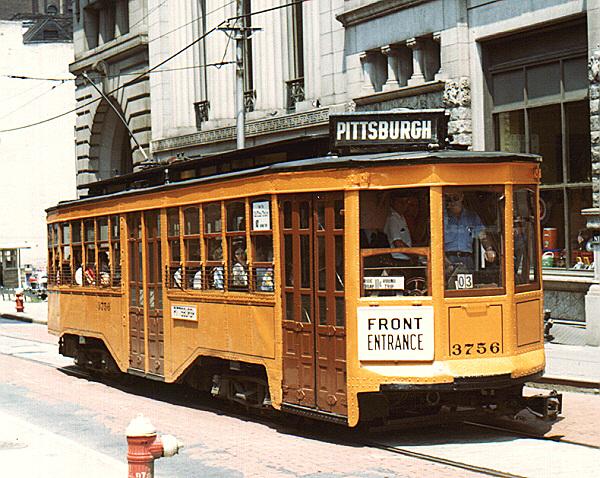 Streetcars and trolleys were always a special interest for Mac McGrew.
He used to ride streetcars around Pittsburgh with his father, and developed a love for them.
Streetcars and trolleys were always a special interest for Mac McGrew.
He used to ride streetcars around Pittsburgh with his father, and developed a love for them.
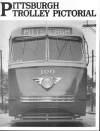
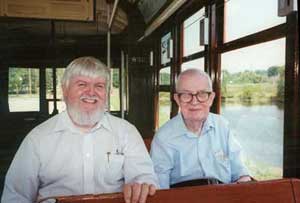


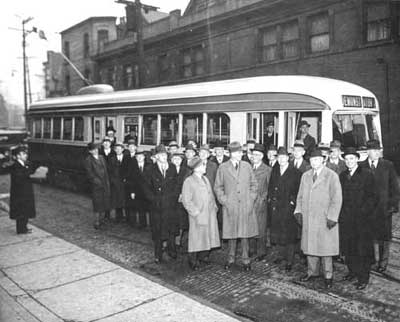
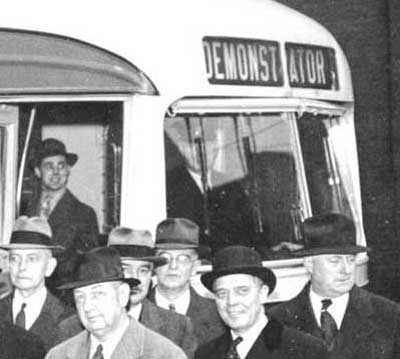
 Except in a few metropolitan areas, most people now think of streetcars as something their grandfathers talked about; something existing only in the dim past or in museums. But many of the older generation remember them as a way of life a dependable form of transit in a great many cities and towns.
Except in a few metropolitan areas, most people now think of streetcars as something their grandfathers talked about; something existing only in the dim past or in museums. But many of the older generation remember them as a way of life a dependable form of transit in a great many cities and towns.